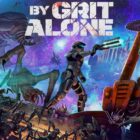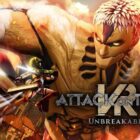August 2, 2019 – Oculus has announced an update to its painting and animation tool Quill. Now available in Early Access, Quill 2.0 transforms Quill into an end-to-end solution for making full VR-native animated stories. Since Oculus released 3D animation support in February 2018, over 68% of all published “Quillustrations” have been narratives clips, according to the company. With Quill 2.0, storytellers can now become full-fledged VR directors, in addition to creating 3D painted scenes and short animated loops.
A typical project can involve the use of various different specialized tools at different steps throughout the narrative process, including storyboarding, modeling, surfacing, rigging, lighting, and rendering. With Quill’s new Animation Timeline feature, storytellers have everything they need to create long-form VR narratives, all in one tool, allowing them to sequence narratives, synchronize animations to sound, create transitions between shots, and much more.
Sebastien Chevrel, Lead Engineer at Quill, said: “With version 2.0, Quill is becoming a self-maintained storytelling tool. We’re introducing a timeline that allows creators to create longer-form animations and storytelling that was not possible before.”
Quill also helps to save time and resources by avoiding file transferring and the need to learn new software. Furthermore, it lets storytellers go from initial concept and storyboards to a finished final animated project, all within the same platform.
Oculus states that Quill leverages VR by taking advantage of spatial interaction. Creators are able to easily navigate the app, then paint and animate with physical movements. Commenting on Quill 2.0, Lilli Thompson, Product Manager at Quill, said: “The vision of Quill is to enable VR native entertainment – not just a movie that you see in two dimensions – but an actual immersive film experience. So like films, but using all the power of VR.”
Keyframes
New to Quill 2.0’s Animation Timeline are transform and opacity keyframes. Users can now set keyframes for transformation and opacity values while also adding interpolation between them. Keyframes can be set for any layer type including: paint, audio, image, and 3D model layers. Groups and Sequences can also be keyframed, allowing for complex nested animations.
For example, users could animate a layered van with rotating tires and smoke in a group, and then animate the whole group down a street with a couple of transform keyframes. This lets users make adjustments to the group’s nested layers without affecting the overall group’s transformation. Previously, this would require frame-by-frame animation to transform the van. Furthermore, since keyframes only store values, this new feature helps reduces file size.
Stops
Stops are a new concept, native to VR animation, which let the main story action pause while keeping the supporting scene alive. In VR storytelling, there are infinite paths and camera angles. Stops let users explore at their own pace while the VR-specific loops continue to play, allowing users to discover every detail a creator has laid out—and giving them the agency to choose when to continue a main story, allowing for a more immersive storytelling experience.
Sequence Layers
Quill 2.0’s Animation Timeline also comes with a new layer called Sequence Layers. These layers are similar to Group Layers, but with one key difference: Sequence Layers are nested timelines within the master Animation Timeline, used to loop multiple sibling layers. As nested timelines, Sequences receive unique privileges on the master Animation Timeline. These privileges include ignoring Stops and securing their own playhead.
Audio
With Quill 1.0, Oculus launched spatial audio support to enhance immersion. Creators could import and position audio files in 3D space. Quill 2.0 now features the addition of directional sound emitters in cone and pyramid shapes. This lets creators build scenes with complex audio needs. The audio files can also be animated.
Additionally, Quill 2.0 now displays wave forms within each layer in the Animation Timeline, which will help when building complex animations like lip-syncing or characters moving to a song’s specific rhythm.
Quill is available for free with Oculus Touch activation on the Rift Platform today. For full details on the release, view the release notes from Oculus.
Video credit: Oculus/YouTube
About the author
Sam is the Founder and Managing Editor of Auganix. With a background in research and report writing, he has been covering XR industry news for the past seven years.




